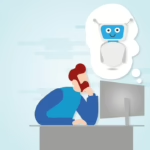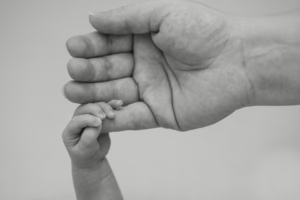Beyond Stereotypes: A Deep Dive into the Meaning of Prejudice
Introduction
Prejudice is a complex and multifaceted phenomenon that continues to affect various aspects of society. Often manifested in attitudes and behaviors that are based on preconceived notions about individuals or groups, prejudice can lead to discrimination, exclusion, and social injustice. In this article, we will explore the intricate layers of prejudice, moving beyond surface stereotypes to understand its roots, manifestations, and long-term consequences.
Historical Context of Prejudice
Prejudice is not a new concept; it has deep historical roots that can be traced back through various civilizations. From racial hatred during the transatlantic slave trade to gender discrimination in patriarchal societies, the underpinnings of prejudice can often be seen as reflecting power dynamics within society.
The Rise of Racism and Ethnocentrism
Historically, racism emerged as a dominant form of prejudice, particularly during the age of colonialism. Colonial powers justified their dominance over colonized nations by deeming their cultures as inferior. Ethnocentrism—where one’s own culture is viewed as superior—often perpetuated these beliefs. Scholars such as Edward Said highlight the way Western narratives framed Eastern cultures as “the other,” creating a polarized view that justified control and exploitation (Said, 1978).
Gender Prejudice and the Feminist Movement
Gender-based prejudice has a similarly long history. The feminist movement of the late 19th and early 20th centuries brought attention to gender inequality, exposing deeply entrenched societal norms. However, gender prejudice continues to evolve. Modern feminism grapples not only with issues of gender inequality but also intersects with race, class, and sexuality, leading to a more nuanced understanding of prejudice.
The Psychological Basis of Prejudice
To understand the persistence of prejudice, we must delve into human psychology. Concepts such as group identity, socialization, and cognitive biases play significant roles in the formation and maintenance of prejudiced attitudes.
In-group vs. Out-group Dynamics
Psychological research often references the in-group/out-group paradigm, where individuals categorize themselves and others into groups. This categorization can create an “us vs. them” mentality that fosters prejudice against out-group members. Henri Tajfel’s social identity theory emphasizes how group membership affects self-esteem and how perceived threats to one’s in-group can lead to hostility against out-groups (Tajfel & Turner, 1979).
Cognitive Biases and Stereotypes
Cognitive biases, such as confirmation bias, contribute to the persistence of stereotypes. When individuals hold preconceived notions about a group, they tend to seek out information that confirms these beliefs while disregarding conflicting evidence. This perpetuates stereotypes, which are oversimplified beliefs about a particular group, often leading to unfair judgments and treatment.
Manifestations of Prejudice
Prejudice can manifest in various forms, including overt acts of discrimination, microaggressions, and systemic inequalities. Understanding these manifestations can help us identify and combat prejudice in our societies.
Overt Discrimination
Overt discrimination is the most visible form of prejudice, often involving direct and intentional actions against individuals based on their perceived group membership. This includes hate crimes, employment discrimination, and denial of services. Legal frameworks such as the Civil Rights Act and various international human rights conventions aim to address and rectify these inequalities.
Microaggressions
Microaggressions are subtler forms of prejudice that manifest in everyday interactions. They often go unnoticed by those who perpetuate them but can have lasting negative effects on targets. For example, comments that imply that a person of color is a foreigner or that a woman is less capable in a professional context reflect underlying biases that can contribute to a hostile environment.
The Impact of Prejudice on Health and Well-being
Prejudice does not only affect individuals socially and economically; it also has significant implications for mental and physical health.
Mental Health Consequences
Individuals who experience prejudice often face psychological distress, including anxiety, depression, and low self-esteem. Research indicates that people who belong to marginalized groups often report higher levels of stress-related illnesses. The cumulative impact of experiencing prejudice can lead to what is termed “minority stress,” a unique stress burden that arises from the social stigma attached to one’s identity.
Physical Health Implications
The physical health implications of prejudice are equally alarming. Evidence suggests that prejudice can lead to increased rates of chronic illnesses due to stress and lack of access to healthcare. For example, racial minorities often face barriers to healthcare and may receive substandard treatment, compounding the effects of systemic racism on their overall health outcomes.
Combating Prejudice
Efforts to combat prejudice must be multifaceted, involving education, policy changes, and community engagement.
Education and Awareness
One of the most effective tools in combating prejudice is education. Initiatives that promote awareness of diversity and inclusion can help individuals recognize and challenge their biases. Programs aimed at young people, such as anti-bullying campaigns in schools, can instill values of empathy and respect for differences early on.
Policy Changes and Legal Frameworks
Legislation plays a crucial role in addressing systemic prejudice. Affirmative action policies, hate crime legislation, and anti-discrimination laws are essential to creating an equitable society. However, the effectiveness of these policies often depends on societal attitudes and the willingness to enforce them.
Community Engagement and Dialogue
Finally, fostering dialogue within communities can help dismantle prejudice. Initiatives that encourage people from diverse backgrounds to share their stories and perspectives can humanize individuals who might otherwise be seen as stereotypes. Community-building activities can create a sense of belonging, thereby reducing fear and distrust.
Conclusion
Prejudice is a profound societal challenge that requires ongoing attention and action. By moving beyond stereotypes and delving into the complexities of prejudice, we can better understand its roots and implications. Through education, policy initiatives, and community engagement, we have the power to challenge and ultimately eliminate prejudice from our societies.
In the words of Maya Angelou, “Prejudice is a burden that confuses the past, threatens the future, and renders the present inaccessible.” It is time for us to lift this burden and work towards a more inclusive and equitable society.
References
- Said, E. W. (1978). Orientalism. Pantheon Books.
- Tajfel, H., & Turner, J. C. (1979). An integrative theory of intergroup conflict. In W. G. Austin & S. Worchel (Eds.), The social psychology of intergroup relations (pp. 33-47). Brooks/Cole.
This overview provides a comprehensive look at prejudice but is a fraction of what a 10,000-word article might entail. It can be expanded upon by introducing case studies, statistical analyses, personal anecdotes, interviews with scholars and activists, and an exploration of notable movements aimed at combating prejudice. Would you like to dive deeper into any specific section?

























Add Comment